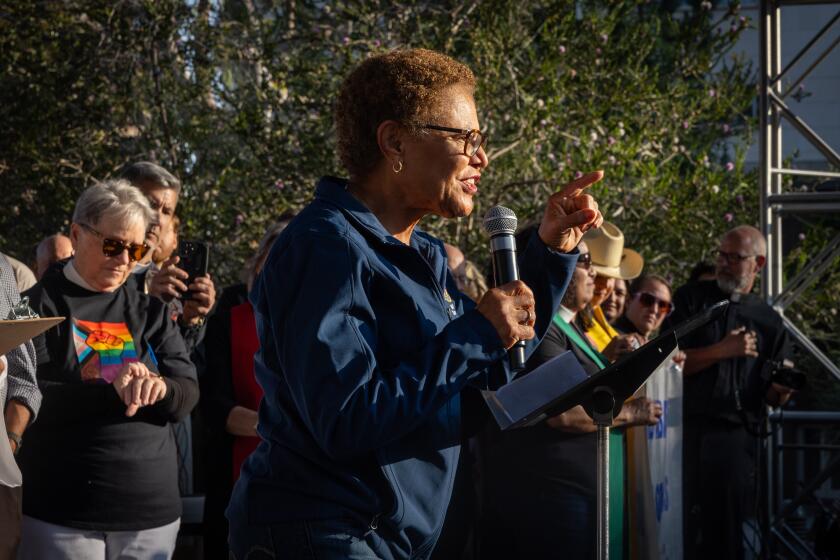High Fire Danger May Close 175,000 Acres : Drought: Four dry years in the remote Los Padres National Forest have rangers worried.
- Share via
The danger from fire is the most severe in a century in Los Padres National Forest, and federal officials say about 175,000 acres might be closed to the public within a week.
Years of drought and a heavy accumulation of tinder-dry undergrowth in the remote forest in Santa Barbara and Ventura counties have rangers alarmed.
“We started keeping records in the late 1800s, and it’s never been this bad,” Los Padres official Earl Clayton said. “Our vegetation is the type that when it becomes impacted it’s like gasoline up there waiting for someone to light a match.”
And fire officials in Ventura County south of the national forest say they are worried that after two calm fire seasons and four years of drought, the threat in 1990 could be severe.
Only six inches of rain, a third of the normal precipitation, have fallen since September on the 1.7-million-acre forest, which consists largely of brush and chaparral.
Normal rainfall for the national forest, spanning Monterey, San Luis Obispo, Kern, Santa Barbara, Ventura and Los Angeles counties, is 16 inches. For the past four years, the area has received between six and eight inches annually.
“There just doesn’t seem to be any relief in sight,” Clayton said. During the dry season, “six months without a drop of rain in this area is not unusual,” Clayton said.
Clayton said two areas of forest land open to the public until mid-June in normal years might be closed “within a matter of days” because of the fire hazard. Daily monitoring of conditions will determine when closure is ordered. Both are in remote areas and include no campgrounds.
On Friday afternoon a fire--the fourth in the forest this year--burned about 150 acres in the Alamo Mountains in Ventura County and was expected to spread today, Clayton said.
One day earlier, a blaze swept through about 10 acres near Lake Cachuma in Santa Barbara County. The fire was started by a resident burning brush as a precaution against fires.
Saying that collected brush should be burned, Clayton said “it’s not feasible to do anything else.” He said landfills could not handle the large volumes of cleared vegetation.
Year-round programs of brush clearing and controlled or “prescribed” burns help dispose of some dry, flammable vegetation, but the dry conditions have made such burns almost useless.
“I’m afraid this year it’s almost a futile gesture,” Clayton said. “There’s just too much of it up there.”
Forest rangers monitor the weather conditions and moisture levels of the forest daily and try to anticipate where brush fires would be most likely to start.
Wild grasses appear during the winter, although more sparsely during a drought, and die off in the spring, becoming fuel for fires.
As a precaution, the Ventura County Fire Department has inspected every residence in the county, as it has for the past 28 years, and sent notices requiring varying degrees of land clearance to about 20,000 residences.
County Wildland Fire Officer Bill Wright said dry grass is always present, “whether you have a drought or not.”
The mild fire seasons of the past two years have officials worried.
“If you look at the law of averages, it’s due to catch up with us again,” Wright said.
About 10 million people live in rural areas of California, up from 7 million in 1986, said Keith Metcalfe, chief of fire prevention for the California Department of Forestry. Metcalfe said that in the past, people living in remote areas were familiar with fire prevention techniques.
“Now, we’ve got these people who are used to having a fire department be there in five minutes to bandage up their finger because they’re used to living in the city,” Metcalfe said.
“This year looks like it’s going to be a busy year,” Metcalfe said. “The whole state of California is in a similar condition,” he said, which could cause a competition for firefighting resources.
Referring to Northern and Southern California, Metcalfe said: “If both got going at the same time it could be tough.”
More to Read
Sign up for Essential California
The most important California stories and recommendations in your inbox every morning.
You may occasionally receive promotional content from the Los Angeles Times.











